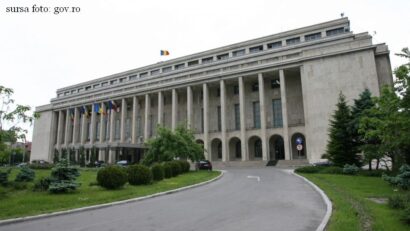The European Commission’s fall economic forecast
The European Commission has published its autumn economic forecast

Corina Cristea, 18.11.2025, 14:00
The European Commission’s autumn forecast shows that Romania’s economy is slowing down against the backdrop of austerity measures adopted to curb the budget deficit, the largest in the EU. According to the European Commission’s report, companies and the population will be affected by austerity in 2026, when economic growth could be only 1.1% of GDP, with the situation expected to stabilize in 2027 through healthy and visible economic growth of over 2%. Throughout this entire period, fiscal measures will put pressure on household and government consumption, but the balance will be maintained by private investments, those funded through the Recovery and Resilience Plan and robust exports. All these will manage to keep the economy in the growth zone, and the deficit should be reduced to below 6% in 2027.
The forecast estimates that Romania’s budget deficit will decrease from 9.3% last year, to 8.4% this year and to 6.2% in 2026, the European Commissioner for Economy and Productivity explained. Valdis Dombrovskis also says that, in Romania’s case, the Commission acknowledges the fiscal effort made by the government so far, which has also allowed the maintenance of credit ratings for investments, “but it is important that Romania continue this adjustment and ultimately bring the budget deficit below 3% of GDP, as established under the excessive deficit procedure”.
One reason for concern to the European Commission is inflation. After this indicator fell to 5.8% in 2024, price growth accelerated in the third quarter of 2025, and the removal, in July, of the electricity price cap led to inflation rising to 8.6% in September. Inflation could remain above the Central Bank’s target at least until 2027, the report notes.
Unemployment could follow a similar trajectory, exceeding 6% in 2025 following the reduction in economic activity, but it could recover throughout 2026.
Alongside Romania, the economic and social situation of the Union is defined by moderate but resilient economic growth. The EU’s GDP grew by 1.4%, with a growth forecast of 1.2% in 2026 and 1.4% in 2027, supported by private consumption and investments, adding to which are a solid labor market, growing purchasing power, favorable financing conditions and the contribution of European funds. Compared to the global economy, the European economy’s growth is, however, relatively modest, with the problems of the European economy including reduced competitiveness compared to other regions, dependencies and tariffs imposed by the USA. The budget deficit is estimated to increase in the EU from 3.1% in 2024 to 3.4% in 2027, mainly due to increased defense spending. At the same time, the Union’s public debt will reach 85% in two years, while in Romania it will be 20% lower.






























